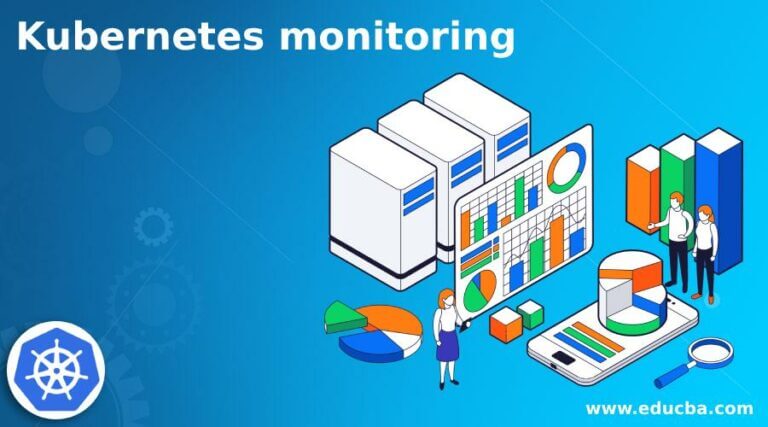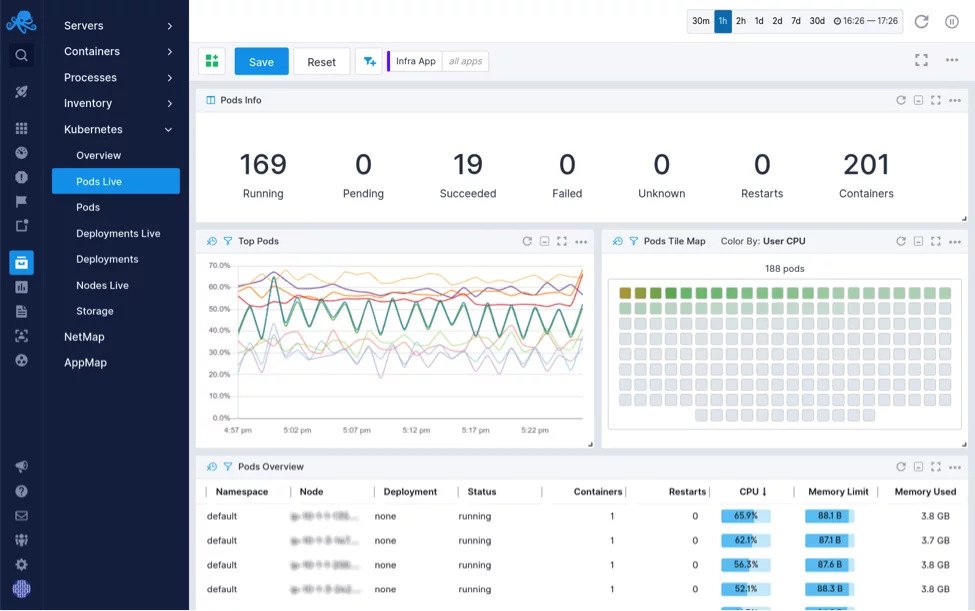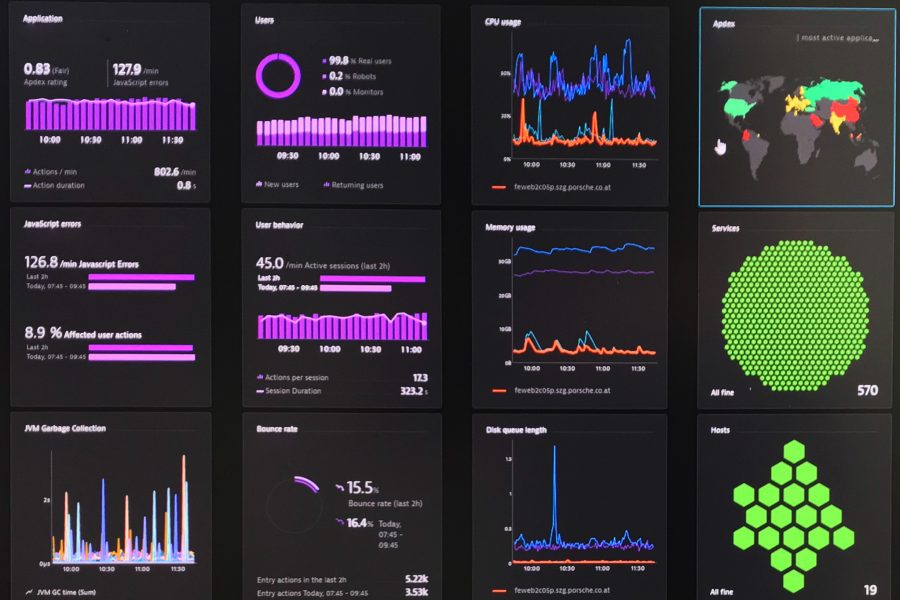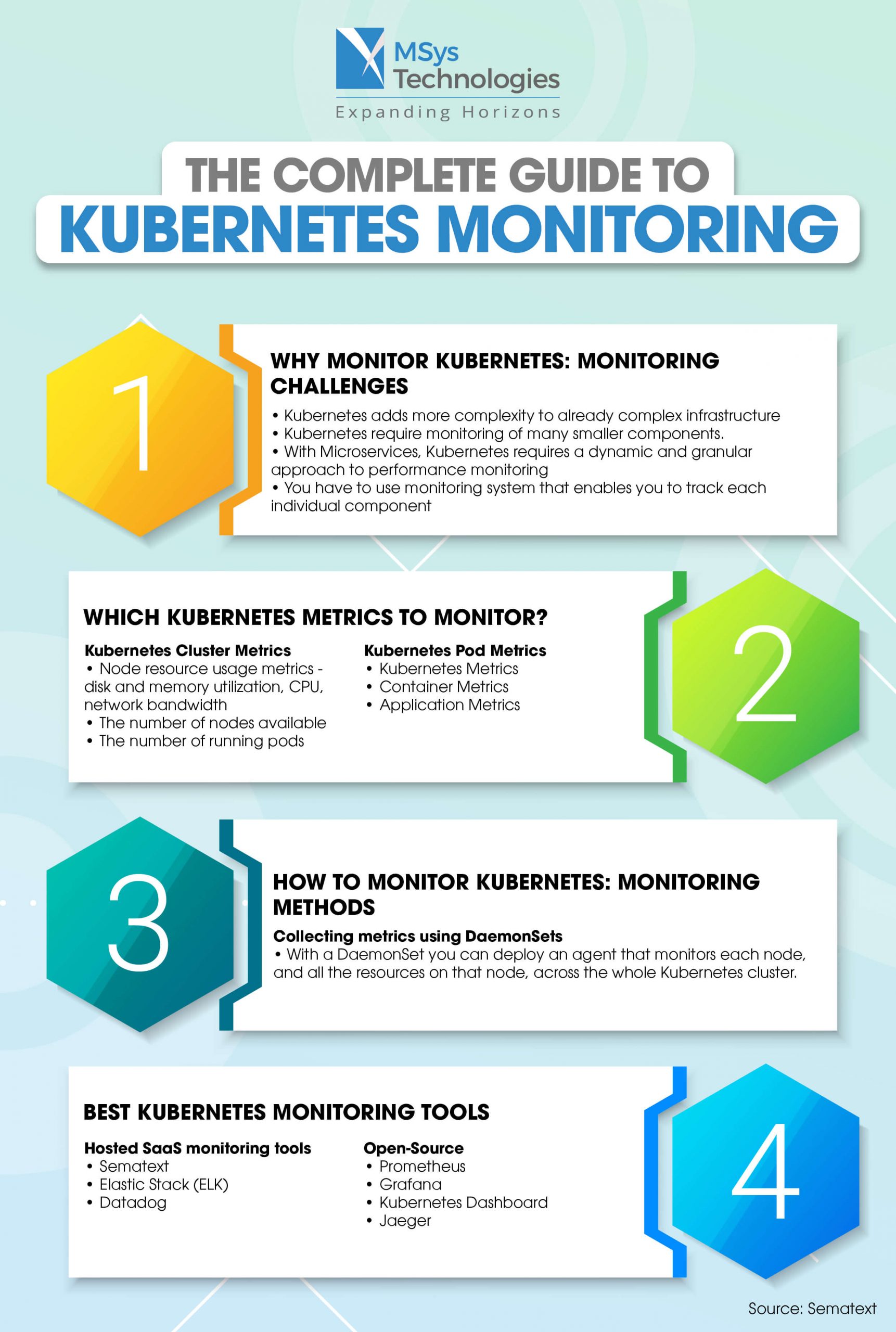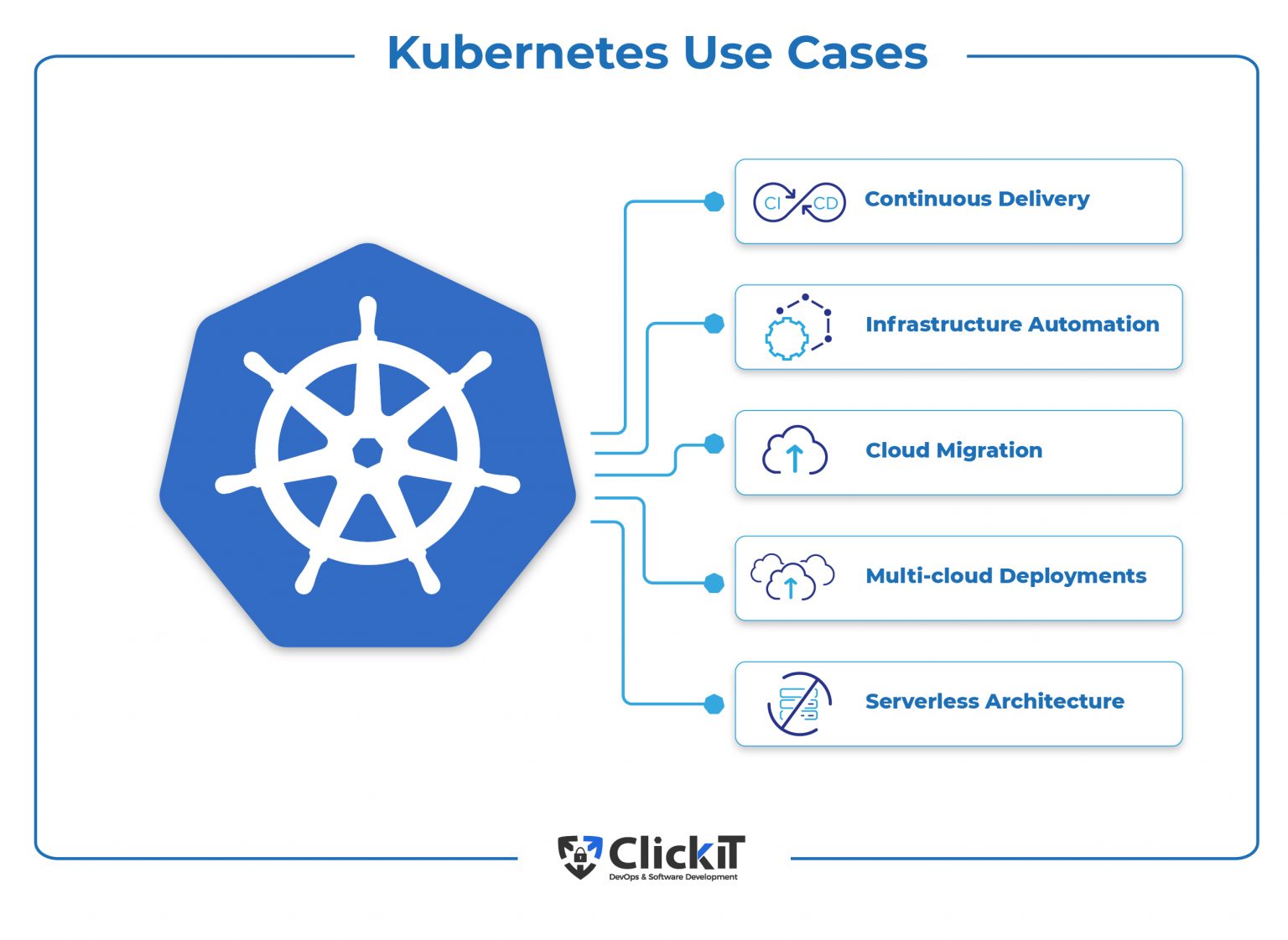Understanding Kubernetes Monitoring: The Crucial Role of Monitoring Tools
Monitoring tools for Kubernetes play a critical role in ensuring the reliability, performance, and security of containerized applications. With the increasing adoption of Kubernetes as a container orchestration platform, the need for effective monitoring has become more important than ever. Real-time visibility into the health and performance of Kubernetes clusters and applications is essential for detecting and resolving issues before they impact end-users.
Monitoring tools for Kubernetes provide several benefits, including real-time visibility, performance optimization, and fault detection. These tools help operations teams to quickly identify and troubleshoot issues, reduce downtime, and ensure that applications are running at optimal performance levels. By providing a unified view of Kubernetes clusters and applications, monitoring tools enable teams to quickly identify and resolve issues, reducing the time and effort required for troubleshooting.
Monitoring containerized environments, however, presents unique challenges. The dynamic nature of containerized applications, with containers being spun up and down frequently, makes it difficult to maintain visibility into the health and performance of individual containers. Additionally, the ephemeral nature of containers means that traditional monitoring approaches, such as agent-based monitoring, may not be effective. Monitoring tools for Kubernetes must be designed to handle these challenges, providing real-time visibility into the health and performance of containerized applications.
To overcome these challenges, monitoring tools for Kubernetes must have certain essential features. These include support for container monitoring, distributed tracing, and log aggregation. Container monitoring enables teams to monitor the health and performance of individual containers, while distributed tracing helps to identify performance bottlenecks and issues in distributed systems. Log aggregation provides a centralized view of logs from multiple sources, enabling teams to quickly identify and troubleshoot issues.
Customizable dashboards, real-time alerts, and integrations with popular DevOps tools are also essential features of monitoring tools for Kubernetes. Customizable dashboards enable teams to create views that are tailored to their specific needs, while real-time alerts ensure that teams are notified of issues as soon as they occur. Integrations with popular DevOps tools, such as Jenkins, GitHub, and Jira, enable teams to automate workflows and streamline operations.
Key Features to Look for in Kubernetes Monitoring Tools
When evaluating monitoring tools for Kubernetes, there are several essential features that businesses should look for. These features can help ensure that the monitoring tool meets the specific needs of the business and provides the necessary visibility into the Kubernetes environment.
First and foremost, a Kubernetes monitoring tool should have support for container monitoring. This feature enables the monitoring tool to track the health and performance of individual containers within a Kubernetes cluster. Container monitoring can help identify issues with specific containers, such as high resource usage or slow response times, and enable teams to take corrective action before they impact the overall system.
Distributed tracing is another essential feature of Kubernetes monitoring tools. Distributed tracing enables teams to visualize the flow of requests through a distributed system and identify performance bottlenecks and issues. By providing a detailed view of the request flow, distributed tracing can help teams optimize system performance and reduce downtime.
Log aggregation is another critical feature of Kubernetes monitoring tools. Log aggregation enables teams to collect and analyze logs from multiple sources within the Kubernetes environment. By providing a centralized view of logs, log aggregation can help teams quickly identify and troubleshoot issues, reducing the time and effort required for troubleshooting.
Customizable dashboards are also essential for Kubernetes monitoring tools. Customizable dashboards enable teams to create views that are tailored to their specific needs, providing a clear and concise view of the Kubernetes environment. Customizable dashboards can help teams quickly identify issues and take corrective action, reducing downtime and improving system reliability.
Real-time alerts are another critical feature of Kubernetes monitoring tools. Real-time alerts enable teams to be notified of issues as soon as they occur, enabling teams to take corrective action before they impact the overall system. Real-time alerts can help teams reduce downtime, improve system reliability, and optimize system performance.
Integrations with popular DevOps tools are also essential for Kubernetes monitoring tools. Integrations with tools such as Jenkins, GitHub, and Jira enable teams to automate workflows and streamline operations. By providing integrations with popular DevOps tools, Kubernetes monitoring tools can help teams improve efficiency and reduce the time and effort required for monitoring and troubleshooting.
Top Kubernetes Monitoring Tools: A Comparative Analysis
When it comes to monitoring Kubernetes environments, there are a variety of tools available in the market today. Here is a comparative analysis of some of the top Kubernetes monitoring tools, including their unique features and limitations.
Prometheus
Prometheus is an open-source monitoring and alerting toolkit that is widely used for monitoring Kubernetes environments. It has a powerful query language called PromQL that enables users to perform complex queries and aggregations on monitoring data. Prometheus also has a strong community and a large number of integrations with other tools.
However, Prometheus has some limitations. It can be challenging to scale horizontally, and it may not be the best choice for large-scale Kubernetes deployments. Additionally, Prometheus does not support distributed tracing out of the box, which can make it difficult to diagnose issues in complex microservices architectures.
Grafana
Grafana is a popular open-source platform for data visualization and monitoring. It has a user-friendly interface and supports a wide range of data sources, including Prometheus. Grafana enables users to create custom dashboards and alerts based on monitoring data.
However, Grafana does not have built-in support for container monitoring or distributed tracing. It relies on external tools, such as Prometheus or Jaeger, to provide these features.
Datadog
Datadog is a commercial monitoring and analytics platform that supports Kubernetes monitoring. It has a wide range of integrations with other tools and provides features such as container monitoring, distributed tracing, and log aggregation.
However, Datadog can be expensive for large-scale deployments, and it may not be the best choice for businesses on a tight budget.
New Relic
New Relic is a commercial monitoring and observability platform that supports Kubernetes monitoring. It provides features such as container monitoring, distributed tracing, and log aggregation. New Relic also has a user-friendly interface and supports a wide range of data sources.
However, New Relic can be expensive for large-scale deployments, and it may not be the best choice for businesses on a tight budget.
Sysdig
Sysdig is a commercial monitoring and security platform that supports Kubernetes monitoring. It provides features such as container monitoring, distributed tracing, and log aggregation. Sysdig also has a powerful security module that enables users to detect and respond to security threats in real-time.
However, Sysdig can be expensive for large-scale deployments, and it may not be the best choice for businesses on a tight budget.
When choosing a Kubernetes monitoring tool, businesses should consider factors such as scalability, ease of use, cost, and integrations with existing tools. By evaluating these factors and conducting a thorough comparison of available tools, businesses can select the monitoring tool that best meets their specific needs and provides the necessary visibility into their Kubernetes environments.
How to Choose the Right Kubernetes Monitoring Tool for Your Business
Choosing the right Kubernetes monitoring tool is crucial for businesses that want to ensure optimal performance, real-time visibility, and fault detection in their containerized environments. However, with so many options available, it can be challenging to determine which tool is the best fit for your business.
To help you make an informed decision, here are some factors to consider when choosing a Kubernetes monitoring tool:
- Scalability: Look for a monitoring tool that can scale horizontally and handle large-scale Kubernetes deployments without sacrificing performance or reliability.
- Ease of use: Choose a monitoring tool that is user-friendly and easy to set up and configure. The tool should have a low learning curve and require minimal training to get started.
- Cost: Consider the cost of the monitoring tool and whether it fits within your budget. Some monitoring tools offer a free tier or a trial period, which can be helpful for testing the tool before making a commitment.
- Integrations: Look for a monitoring tool that integrates with your existing tools and workflows. The tool should support popular DevOps tools, such as Jenkins, GitHub, and Jira, and provide APIs for custom integrations.
- Customizable dashboards: Choose a monitoring tool that offers customizable dashboards and visualization options. The tool should enable you to create custom views and reports based on your specific needs and requirements.
- Real-time alerts: Look for a monitoring tool that supports real-time alerts and notifications. The tool should enable you to set up custom alerts based on specific conditions and thresholds, and send notifications via email, Slack, or other messaging platforms.
- Support and documentation: Choose a monitoring tool that offers comprehensive support and documentation. The tool should have a robust community of users and developers, and provide detailed documentation, tutorials, and best practices for getting started.
To evaluate and select a monitoring tool, follow these steps:
- Define your monitoring requirements and objectives.
- Research and compare different monitoring tools based on your specific needs and requirements.
- Test the monitoring tool in a sandbox or development environment.
- Evaluate the monitoring tool based on the factors discussed above.
- Choose the monitoring tool that best meets your needs and requirements.
By following these steps and considering the factors discussed above, you can choose the right Kubernetes monitoring tool for your business and ensure optimal performance, real-time visibility, and fault detection in your containerized environments.
Implementing Kubernetes Monitoring: Best Practices and Tips
Implementing Kubernetes monitoring can be a complex and challenging task, but it is essential for ensuring optimal performance, real-time visibility, and fault detection in containerized environments. Here are some best practices and tips for implementing Kubernetes monitoring:
Set up monitoring alerts
Setting up monitoring alerts is crucial for detecting and resolving issues in real-time. Monitoring alerts should be customized based on specific conditions and thresholds, such as CPU usage, memory usage, and network latency. Alerts should be sent via email, Slack, or other messaging platforms to ensure that the right people are notified at the right time.
Establish baselines
Establishing baselines is essential for understanding the normal behavior of your Kubernetes environment. Baselines should be established for key performance metrics, such as CPU usage, memory usage, and network latency. Baselines can help you identify anomalies, detect trends, and optimize performance.
Regularly review monitoring data
Regularly reviewing monitoring data is essential for detecting issues, optimizing performance, and improving system reliability. Monitoring data should be reviewed daily, weekly, and monthly to identify trends, detect anomalies, and optimize performance. Customizable dashboards and visualization options can help you quickly identify issues and take corrective action.
Handle common monitoring scenarios
Handling common monitoring scenarios is essential for ensuring optimal performance and system reliability. Common monitoring scenarios include container restarts, node failures, and network outages. Monitoring tools should provide real-time visibility into these scenarios and enable you to take corrective action quickly.
Implement best practices for Kubernetes monitoring
Implementing best practices for Kubernetes monitoring is essential for ensuring optimal performance, real-time visibility, and fault detection. Best practices include using a centralized monitoring platform, implementing distributed tracing, and using customizable dashboards. Best practices can help you optimize performance, detect issues, and improve system reliability.
Continuously monitor and optimize
Continuously monitoring and optimizing your Kubernetes environment is essential for ensuring optimal performance, real-time visibility, and fault detection. Monitoring should be an ongoing process, and monitoring tools should be regularly updated and optimized to ensure that they are meeting your specific needs and requirements.
By following these best practices and tips, you can implement Kubernetes monitoring effectively and ensure optimal performance, real-time visibility, and fault detection in your containerized environments.
Real-World Use Cases: How Companies are Using Kubernetes Monitoring Tools
Kubernetes monitoring tools are being used by companies across various industries to optimize performance, detect faults, and improve overall system reliability. Here are some real-world use cases of companies using Kubernetes monitoring tools:
Finance industry: Monitoring trading applications
Financial institutions are using Kubernetes monitoring tools to monitor trading applications in real-time. Monitoring tools provide visibility into the performance and availability of trading applications, enabling financial institutions to detect and resolve issues quickly. Monitoring tools also help financial institutions optimize the performance of trading applications, ensuring that they can handle high volumes of trades during peak periods.
Healthcare industry: Monitoring medical devices
Healthcare organizations are using Kubernetes monitoring tools to monitor medical devices in real-time. Monitoring tools provide visibility into the performance and availability of medical devices, enabling healthcare organizations to detect and resolve issues quickly. Monitoring tools also help healthcare organizations optimize the performance of medical devices, ensuring that they can provide high-quality patient care.
E-commerce industry: Monitoring online stores
E-commerce companies are using Kubernetes monitoring tools to monitor online stores in real-time. Monitoring tools provide visibility into the performance and availability of online stores, enabling e-commerce companies to detect and resolve issues quickly. Monitoring tools also help e-commerce companies optimize the performance of online stores, ensuring that they can handle high volumes of traffic during peak periods.
Manufacturing industry: Monitoring production lines
Manufacturing companies are using Kubernetes monitoring tools to monitor production lines in real-time. Monitoring tools provide visibility into the performance and availability of production lines, enabling manufacturing companies to detect and resolve issues quickly. Monitoring tools also help manufacturing companies optimize the performance of production lines, ensuring that they can meet production targets and reduce downtime.
Transportation industry: Monitoring fleet management systems
Transportation companies are using Kubernetes monitoring tools to monitor fleet management systems in real-time. Monitoring tools provide visibility into the performance and availability of fleet management systems, enabling transportation companies to detect and resolve issues quickly. Monitoring tools also help transportation companies optimize the performance of fleet management systems, ensuring that they can manage their fleets efficiently and reduce downtime.
These real-world use cases demonstrate the value of Kubernetes monitoring tools for businesses across various industries. By using monitoring tools, businesses can optimize performance, detect faults, and improve overall system reliability, ensuring long-term success and staying ahead of the competition.
The Future of Kubernetes Monitoring: Trends and Predictions
Monitoring containerized environments such as Kubernetes is an ever-evolving field, and new trends and technologies are emerging all the time. Here are some predictions and trends to watch out for in the future of Kubernetes monitoring:
Artificial Intelligence and Machine Learning
Artificial intelligence (AI) and machine learning (ML) are becoming increasingly important in the field of monitoring. These technologies can help analyze large volumes of monitoring data and identify patterns and anomalies that might be missed by human operators. In the future, we can expect to see more Kubernetes monitoring tools incorporating AI and ML to provide more accurate and proactive monitoring.
Integration with Cloud Native Tools
As Kubernetes becomes more widely adopted, there is a growing trend towards integrating Kubernetes monitoring tools with cloud native tools such as Prometheus, Grafana, and Fluentd. These tools provide powerful monitoring and logging capabilities that can be used to monitor Kubernetes environments. By integrating with these tools, Kubernetes monitoring tools can provide more comprehensive monitoring and logging capabilities.
Growing Importance of Open Source Tools
Open source tools are becoming increasingly important in the field of Kubernetes monitoring. Open source tools provide a high degree of flexibility and customization, making them ideal for monitoring complex containerized environments. In the future, we can expect to see more businesses adopting open source Kubernetes monitoring tools to gain more control over their monitoring and logging.
Increased Focus on Security
Security is becoming an increasingly important concern in containerized environments. As Kubernetes environments become more complex, there is a growing risk of security breaches and vulnerabilities. In the future, we can expect to see more Kubernetes monitoring tools incorporating security features such as intrusion detection and prevention, vulnerability scanning, and compliance monitoring.
Challenges and Opportunities
Monitoring containerized environments such as Kubernetes presents both challenges and opportunities. The dynamic nature of containerized environments can make monitoring more complex, but it also provides opportunities for more fine-grained monitoring and optimization. In the future, businesses that invest in Kubernetes monitoring tools and best practices will be better positioned to optimize their containerized environments and stay ahead of the competition.
Conclusion: The Importance of Monitoring Tools for Kubernetes
Monitoring tools for Kubernetes play a crucial role in ensuring the reliability, performance, and security of containerized environments. By providing real-time visibility into the health and status of Kubernetes clusters, monitoring tools enable businesses to optimize performance, detect faults, and improve overall system reliability.
When choosing a Kubernetes monitoring tool, businesses should consider factors such as scalability, ease of use, cost, and integrations with existing tools. By evaluating these factors and following best practices for implementing Kubernetes monitoring, businesses can ensure that they are getting the most value out of their monitoring tools.
In the future, we can expect to see emerging technologies such as artificial intelligence and machine learning having a significant impact on Kubernetes monitoring. These technologies have the potential to provide more accurate and proactive monitoring, enabling businesses to stay ahead of the competition and ensure long-term success.
Investing in Kubernetes monitoring tools is essential for businesses that want to optimize their containerized environments and ensure long-term success. By providing real-time visibility, performance optimization, and fault detection, monitoring tools can help businesses stay ahead of the competition and ensure long-term success.

